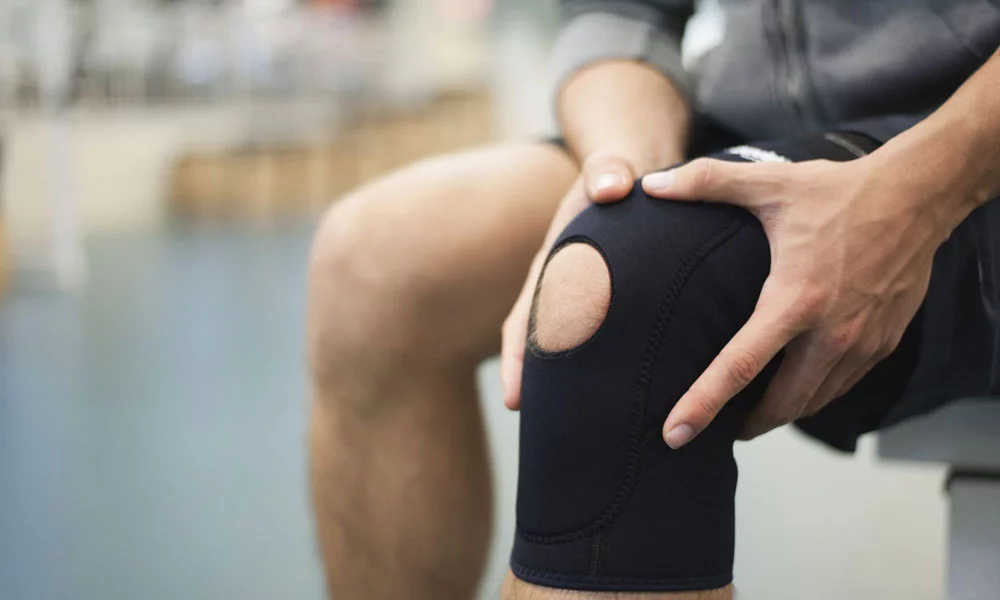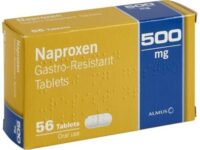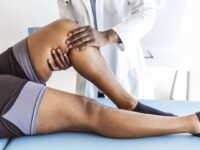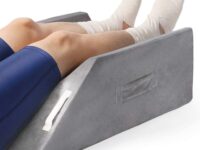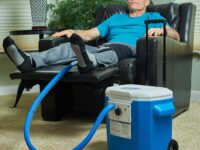Contusions, or bruises, are a common injury that can occur anywhere on the body, including the knee cap. A contusion on the knee cap can be a painful and frustrating injury to deal with, especially if you are an athlete or someone who is active. Knee cap contusions occur when there is a direct blow or impact to the knee, which causes the small blood vessels in the area to rupture and bleed. This leads to a build-up of blood and other fluids under the skin, resulting in a bruise. In this post, we will discuss the symptoms of a knee cap contusion, the causes of the injury, and the most effective treatments to help manage the pain and promote healing. Whether you are dealing with a mild or severe contusion, understanding the injury and how to properly treat it is essential for a quick and successful recovery.
-
Introduction to knee contusions: causes and symptoms
Knee contusions can be a painful and debilitating injury, affecting individuals of all ages and activity levels. Understanding the causes and symptoms of a knee contusion is crucial in order to effectively treat and manage this condition.
A knee contusion, also known as a bruised knee, occurs when there is a direct impact or trauma to the knee cap. This can happen during sports activities, falls, or accidents. The forceful impact causes bleeding and damage to the blood vessels and tissues surrounding the knee, resulting in a contusion.
Common symptoms of a knee contusion include immediate pain and tenderness at the site of impact. The knee may also appear swollen, bruised, and discolored. In some cases, a contusion can also cause difficulty in moving the knee joint, leading to stiffness and limited range of motion.
It’s important to note that while knee contusions are generally not life-threatening, they should not be ignored or dismissed as a minor injury. If left untreated, a contusion can lead to complications such as chronic pain, inflammation, and even the development of scar tissue.
If you suspect a knee contusion, it is recommended to seek medical attention for a proper diagnosis and treatment plan. Your healthcare provider may perform a physical examination, assess the severity of the contusion, and order imaging tests, such as an X-ray or MRI, to rule out any fractures or internal injuries.
In the next sections, we will delve deeper into the various treatment options available for knee contusions, including self-care measures, pain management techniques, and rehabilitation exercises. By understanding the causes and symptoms of a knee contusion, you will be better equipped to navigate the road to recovery and regain full functionality of your knee joint.
-
Understanding the anatomy of the knee and the patella (knee cap)
To effectively understand and treat a contusion on the knee cap, it is crucial to have a clear understanding of the anatomy of the knee and the patella. The knee is a complex joint that connects the thigh bone (femur) to the shin bone (tibia). It is surrounded by ligaments, tendons, and muscles, all working together to support movement and provide stability.
At the front of the knee, we find the patella, commonly known as the knee cap. The patella is a small, triangular bone that sits in the tendon of the quadriceps muscles, which are located at the front of the thigh. It acts as a protective shield for the knee joint and plays a crucial role in knee movement.
The patella is held in place by the quadriceps tendon, which attaches it to the quadriceps muscles, and the patellar tendon, which connects it to the shin bone. These tendons work in harmony to allow the patella to glide smoothly along the groove at the end of the femur when the knee bends and straightens.
Understanding the anatomy of the knee and the patella is important when it comes to treating a contusion on the knee cap. A contusion, also known as a bruise, occurs when there is an impact or trauma to the knee, causing blood vessels to break and blood to pool in the surrounding tissues.
When the patella is affected by a contusion, it can result in pain, swelling, and limited mobility. The severity of the contusion can vary, ranging from mild discomfort to more significant injuries that require medical intervention.
By understanding the intricate structures within the knee joint, healthcare professionals can accurately diagnose and develop a treatment plan for a contusion on the knee cap. This may include rest, ice, compression, elevation (RICE), pain management, physical therapy, and in severe cases, surgical intervention.
In conclusion, comprehending the anatomy of the knee and the patella is fundamental in effectively understanding and treating a contusion on the knee cap. It enables healthcare professionals to provide appropriate care and guide patients towards a successful recovery, restoring normal function and alleviating pain.
-
Common causes of knee contusions
Knee contusions, or bruises on the knee cap, can be quite painful and limit your mobility. Understanding the common causes of knee contusions is crucial in preventing future injuries and seeking appropriate treatment.
One common cause of knee contusions is direct trauma or impact to the knee. This can occur during sports activities, such as football, basketball, or even falls during daily activities. The forceful impact can result in the blood vessels beneath the skin breaking, leading to the formation of a bruise.
Another cause of knee contusions is repetitive stress or overuse. Activities that involve repetitive bending or kneeling, such as gardening or certain occupations that require frequent kneeling, can lead to inflammation and bruising of the knee cap over time.
In some cases, knee contusions can also occur due to underlying medical conditions. Conditions like hemophilia or other bleeding disorders can make individuals more prone to bruising. Additionally, certain medications, such as blood thinners, can increase the risk of developing bruises with minimal trauma to the knee area.
Understanding the common causes of knee contusions is essential for taking preventive measures. Wearing protective gear, such as knee pads or braces, during sports activities can help reduce the risk of direct trauma to the knee. It is also important to take breaks and avoid repetitive stress on the knee to prevent overuse injuries.
If you experience a knee contusion, it is crucial to seek appropriate treatment. Initial treatment usually involves rest, ice, compression, and elevation (RICE). Applying ice packs, using compression bandages, and keeping the affected leg elevated can help reduce swelling and alleviate pain. Over-the-counter pain medications may also be recommended to manage discomfort.
In more severe cases, medical intervention may be necessary. A healthcare professional may recommend physical therapy to strengthen the knee muscles and improve mobility. In rare instances, surgical intervention may be required to repair any internal damage or address any underlying conditions.
By understanding the common causes of knee contusions and taking appropriate preventive measures, you can minimize the risk of developing bruises on your knee cap. If you do experience a knee contusion, seeking timely and proper treatment will aid in a faster recovery and prevent potential complications.
-
Signs and symptoms of a knee contusion
Recognizing the signs and symptoms of a knee contusion is crucial in understanding and treating this common injury. A knee contusion, also known as a bruise, occurs when small blood vessels under the skin are damaged due to direct impact or trauma to the knee cap. While contusions can range from mild to severe, they often share similar signs and symptoms.
One of the most apparent indicators of a knee contusion is the presence of localized pain and tenderness at the site of impact. This pain may intensify when pressure is applied or when engaging in activities that involve bending or straightening the knee. Swelling is another common symptom, which occurs as a result of the body’s natural inflammatory response to the injury.
In addition to pain and swelling, individuals with a knee contusion may also experience discoloration of the skin. Initially, the bruised area may appear reddish or purplish due to the pooling of blood beneath the skin. As the contusion heals, the color may change to a bluish or greenish hue before gradually fading away.
It is important to note that in more severe cases, additional symptoms may be present. These can include difficulty walking, stiffness, limited range of motion, or the sensation of instability in the knee joint. It is important to seek medical attention if any of these symptoms occur or if the pain and swelling worsen over time.
By understanding the signs and symptoms of a knee contusion, individuals can take appropriate measures to treat and manage their injury. Early intervention, such as applying ice, elevating the leg, and using over-the-counter pain relievers, can help alleviate discomfort and reduce swelling. However, if the symptoms persist or worsen, it is advisable to consult a healthcare professional for a thorough evaluation and personalized treatment plan.
-
Seeking medical help and diagnosis
When it comes to a contusion on the knee cap, seeking medical help and diagnosis is crucial. While minor contusions may heal on their own with rest and self-care, more severe cases may require professional intervention.
If you experience persistent pain, swelling, or difficulty bearing weight on the affected knee, it is important to consult with a healthcare provider. They will conduct a thorough examination to assess the extent of the injury and determine the appropriate course of treatment.
During the medical evaluation, your doctor may order imaging tests such as an X-ray or MRI to rule out any fractures or ligament damage that could be contributing to your symptoms. These tests can provide valuable insights into the underlying cause of the contusion and guide the treatment plan.
Additionally, seeking medical help early on can help prevent any potential complications or long-term damage. A healthcare professional can provide tailored advice on managing pain, reducing swelling, and promoting healing. They may recommend specific exercises or physical therapy to strengthen the surrounding muscles and improve joint stability.
Remember, self-diagnosis and self-treatment may not always be accurate or effective, especially when it comes to knee injuries. Consulting a medical professional ensures that you receive the proper diagnosis and appropriate care, leading to a faster and more successful recovery.
-
Initial care and self-treatment options for a knee contusion
When it comes to a knee contusion, prompt and appropriate initial care is crucial to ensure proper healing and minimize discomfort. While seeking medical advice is always recommended, there are some self-treatment options that can be implemented to manage a knee contusion in the early stages.
One of the first steps is to apply the RICE principle: Rest, Ice, Compression, and Elevation. Resting the injured knee is vital to prevent further damage and allow the healing process to begin. Applying ice to the affected area for about 15-20 minutes every 2-3 hours helps reduce pain, inflammation, and swelling. Wrapping the knee with a compression bandage provides support and minimizes swelling, while elevating the leg helps reduce fluid buildup.
Over-the-counter pain relievers, such as ibuprofen or acetaminophen, can also be taken to alleviate pain and reduce inflammation. However, it’s important to follow the recommended dosage and consult a healthcare professional if you have any underlying health conditions or concerns.
In addition to these initial care measures, gentle exercises and stretching can help prevent stiffness and promote blood circulation in the knee. However, it’s crucial to avoid putting excessive strain on the injured knee and to listen to your body’s signals. If an exercise or movement causes increased pain or discomfort, it’s best to discontinue it and consult a healthcare professional for further guidance.
While self-treatment options can help manage the initial symptoms of a knee contusion, it’s important to keep in mind that every injury is unique, and seeking medical advice is essential for an accurate diagnosis and appropriate treatment plan. A healthcare professional will be able to provide a comprehensive assessment, recommend specific exercises or therapies, and ensure proper healing of the knee contusion.
-
Rest, ice, compression, and elevation (RICE) technique
When it comes to treating a contusion on the knee cap, one of the most effective techniques is the RICE method – rest, ice, compression, and elevation. This tried and true approach is widely recommended by healthcare professionals and can help alleviate pain, reduce swelling, and promote healing.
Rest is crucial in the initial stages of a knee cap contusion. It allows the injured area to recover by minimizing movement and preventing further damage. Avoid activities that put strain on the knee and provide ample time for rest to facilitate the healing process.
Applying ice to the affected area is another important step in managing a knee cap contusion. Ice helps reduce swelling and inflammation, numbs the area to alleviate pain, and constricts blood vessels to prevent excessive bleeding. Wrap an ice pack or a bag of frozen peas in a thin towel and apply it to the injured knee for 15-20 minutes every few hours.
Compression is beneficial in controlling swelling and providing support to the injured knee. Using an elastic bandage or a compression sleeve, gently wrap the knee, ensuring it is snug but not too tight. Compression helps limit the buildup of fluid in the injured area and provides stability to promote healing.
Elevating the leg is a simple yet effective technique in reducing swelling and improving blood flow to the injured area. Prop your leg up on a pillow or cushion so that it is above the level of your heart. This position helps drain excess fluid and reduces pressure on the knee cap, aiding in the healing process.
Remember, the RICE technique is most effective when used in the initial stages following a knee cap contusion. However, it is important to consult with a healthcare professional for a proper diagnosis and personalized treatment plan based on the severity of the injury.
-
Over-the-counter pain relief options for knee contusions
When it comes to treating a contusion on the knee cap, over-the-counter pain relief options can be an effective way to manage the discomfort and promote healing. These readily available medications can help alleviate pain, reduce inflammation, and provide temporary relief from the symptoms associated with a knee contusion.
One of the most common over-the-counter pain relief options is nonsteroidal anti-inflammatory drugs (NSAIDs) such as ibuprofen or naproxen. These medications work by reducing inflammation and relieving pain. They can be taken orally or applied topically in the form of gels or creams for localized relief.
Another option is acetaminophen, which is a pain reliever that can help reduce mild to moderate pain. Unlike NSAIDs, acetaminophen does not have anti-inflammatory properties, but it can still provide effective relief for discomfort caused by a knee contusion.
Topical analgesics, such as creams or ointments containing menthol or capsaicin, can also be used to alleviate pain. These products work by numbing the area or creating a warming sensation that helps distract from the pain.
It’s important to note that while over-the-counter pain relief options can be helpful, they are not a cure for a knee contusion. It’s always recommended to consult with a healthcare professional for a proper diagnosis and to discuss the best treatment options for your specific situation. They can provide guidance on dosage, potential side effects, and any contraindications based on your medical history.
In addition to over-the-counter pain relief, other self-care measures such as rest, ice, compression, and elevation (RICE) can also be beneficial in managing a knee contusion. However, if the pain persists, worsens, or is accompanied by other concerning symptoms, it’s crucial to seek medical attention for further evaluation and appropriate treatment.
-
Physical therapy exercises for healing and strengthening the knee
Physical therapy exercises play a crucial role in the healing and strengthening process of a contusion on the knee cap. These exercises not only aid in the recovery but also help prevent further injuries and improve overall knee function.
One effective exercise is the straight leg raise. To perform this exercise, lie flat on your back with one leg straight and the other bent. Slowly lift the straight leg off the ground, keeping it straight, and hold for a few seconds before lowering it back down. Repeat this exercise several times, gradually increasing the number of repetitions as your knee becomes stronger.
Another beneficial exercise is the quadriceps set. Sit on a chair or lie down with your legs extended in front of you. Tighten the muscles on the front of your thigh and hold for a few seconds before releasing. Repeat this exercise multiple times, focusing on maintaining proper form and gradually increasing the duration of each contraction.
To further strengthen the knee and improve stability, incorporating balance exercises is essential. One such exercise is the single-leg balance. Stand on one leg with your knee slightly bent and try to maintain your balance for as long as possible. As you progress, challenge yourself by closing your eyes or standing on an unstable surface such as a foam pad.
It is important to note that these exercises should be performed under the guidance of a licensed physical therapist to ensure proper form and prevent any additional strain on the knee. They will tailor the exercises to your specific needs and monitor your progress throughout the healing process.
In addition to these exercises, your physical therapist may also recommend other modalities such as ultrasound therapy, heat or ice application, and manual therapy techniques to aid in the recovery and reduction of pain associated with a contusion on the knee cap.
Remember, consistency and gradual progression are key when it comes to physical therapy exercises. Be patient with your recovery process and follow the guidance of your physical therapist to achieve the best results in healing and strengthening your knee.
-
When to seek professional medical treatment
While many knee cap contusions can be treated at home with rest, ice, compression, and elevation (RICE), there are certain scenarios where seeking professional medical treatment is crucial. It’s important to recognize the signs and symptoms that indicate a more severe injury or complications.
If you experience any of the following, it is advisable to seek medical attention promptly:
- Severe pain: If the pain is unbearable or significantly worsens over time, it could be a sign of a more serious underlying condition. A medical professional can assess the extent of the injury and provide appropriate treatment.
- Inability to bear weight: If you are unable to put weight on the affected leg or experience significant difficulty in walking, it may indicate a more severe injury, such as a fracture or ligament tear. A doctor can conduct a thorough examination and order diagnostic tests to determine the exact nature of the injury.
- Visible deformity or swelling: If there is a noticeable deformity in the knee cap or if the swelling is excessive, it could indicate a more complex injury, such as a dislocation or a fracture. Seeking medical attention promptly can help prevent further damage and ensure proper treatment.
- Limited range of motion: If you are unable to fully bend or extend your knee, it could be a sign of a more serious injury. A medical professional can assess the range of motion and perform tests to evaluate the stability of the knee joint.
- Persistent symptoms: If your symptoms, such as pain, swelling, or bruising, persist or worsen despite home remedies and conservative treatments, it is advisable to consult a healthcare provider. They can evaluate the situation, identify any potential complications, and recommend appropriate interventions.
Remember, every injury is unique, and seeking professional medical advice is essential to ensure an accurate diagnosis and effective treatment plan. By promptly addressing any concerns, you can expedite the healing process and prevent long-term complications.
-
Surgical options for severe knee contusions
In most cases, conservative treatment methods are effective in managing knee contusions. However, for severe cases where conservative measures fail to provide relief, surgical options may be considered.
One surgical option for severe knee contusions is arthroscopy. Arthroscopy is a minimally invasive procedure that involves inserting a small camera called an arthroscope into the knee joint through small incisions. This allows the surgeon to visualize the injury and address any underlying issues, such as damaged cartilage or ligaments.
Another surgical option is open surgery, which may be necessary for more complex or extensive contusions. Open surgery involves making a larger incision to access the knee joint directly. This approach allows the surgeon to repair any damaged structures, remove loose fragments, or reconstruct ligaments if necessary.
In some cases, a procedure called microfracture may be performed during surgery. Microfracture involves creating tiny holes in the bone surface to stimulate the growth of new cartilage. This can help to alleviate pain and improve the overall function of the knee joint.
It is important to note that surgical intervention for knee contusions is typically reserved for severe cases and is not the first-line treatment option. Surgery carries its own risks and requires a thorough evaluation by a qualified orthopedic surgeon.
If you are experiencing a severe knee contusion that is not responding to conservative treatment methods, it is crucial to consult with a healthcare professional who can assess your specific condition and recommend the most appropriate treatment approach, which may or may not involve surgery.
-
Preventive measures to avoid future knee contusions
Preventing future knee contusions is crucial to maintaining knee health and avoiding further injuries. By implementing a few simple preventive measures, you can significantly reduce the risk of experiencing another contusion on the knee cap.
First and foremost, it is important to maintain a healthy weight. Excess weight puts additional stress on your knees, making them more susceptible to injuries. By maintaining a healthy weight through regular exercise and a balanced diet, you can relieve the strain on your knees and reduce the likelihood of future contusions.
Another effective preventive measure is to strengthen the muscles around your knees. Engaging in exercises that target the quadriceps, hamstrings, and calf muscles can provide stability and support to the knee joint. This can be achieved through activities such as leg presses, squats, lunges, and calf raises. Additionally, incorporating exercises that focus on improving balance and coordination, such as yoga or Pilates, can further enhance knee stability.
Using appropriate protective gear during physical activities is also crucial in preventing knee contusions. Wearing knee pads or knee braces can provide an extra layer of cushioning and support, especially during high-impact activities or sports that involve jumping or sudden changes in direction.
Furthermore, it is important to ensure that you are using proper techniques and form during physical activities. Incorrect movements and sudden jerks can put excessive strain on the knees, increasing the risk of contusions. Seeking guidance from a professional trainer or coach can help you learn the correct techniques and minimize the risk of injury.
Lastly, always remember to warm up and cool down before and after any physical activity. This helps to prepare your muscles and joints for the activity ahead and reduces the risk of sudden injuries. Incorporate dynamic stretches and light exercises to warm up your muscles, and finish with static stretches to cool down and improve flexibility.
By implementing these preventive measures, you can significantly reduce the chances of experiencing future knee contusions. Prioritizing knee health and taking proactive steps to protect your knees will not only prevent injuries but also contribute to your overall well-being and enjoyment of physical activities.
-
Recovery timeline and expectations
Recovering from a contusion on the knee cap can vary from person to person, depending on the severity of the injury and individual factors such as age and overall health. Generally, the recovery timeline can be divided into different phases.
In the immediate aftermath of the injury, the focus is on reducing pain and swelling. This may involve applying ice packs, elevating the leg, and taking over-the-counter pain medications as recommended by a healthcare professional. Resting the knee and avoiding activities that aggravate the injury is crucial during this stage.
Within the first week or two, the pain and swelling should start to subside. At this point, gentle range-of-motion exercises may be recommended to prevent stiffness and promote healing. Physical therapy or rehabilitation exercises can also be introduced to improve strength, stability, and flexibility in the knee joint. It is important to follow the guidance of a healthcare professional to prevent further damage and aid in a successful recovery.
As time progresses, typically after several weeks, the knee should start to regain normal function. However, it is important to note that the healing process may continue for several months. Some individuals may experience residual pain or discomfort during certain activities, and it is important to listen to your body and not push yourself too hard.
It is essential to have realistic expectations during the recovery process. While some people may recover fully within a few weeks, others may require a longer period of time to heal. It is not uncommon to experience occasional flare-ups of pain or swelling, especially with increased activity. Patience and consistency with rehabilitation exercises and self-care measures are key to achieving the best possible outcome.
Remember, every individual’s recovery journey is unique. It is recommended to consult with a healthcare professional for a personalized recovery timeline and specific instructions tailored to your situation. They can provide guidance, monitor your progress, and address any concerns or complications that may arise during your recovery from a contusion on the knee cap.
-
Rehabilitation and returning to physical activity after a knee contusion
Rehabilitation plays a crucial role in the recovery process after a knee contusion. The goal of rehabilitation is to regain strength, flexibility, and stability while gradually returning to physical activity. It is important to follow a structured rehabilitation program to ensure a safe and successful return to your regular activities.
Initially, the focus of rehabilitation will be on reducing pain and swelling. This may involve the use of ice, compression, and elevation to alleviate discomfort and promote healing. In some cases, a healthcare professional may recommend the use of assistive devices, such as crutches or a knee brace, to protect the injured knee during this initial phase.
As the pain and swelling subside, rehabilitation will progress to include exercises that target specific muscle groups around the knee. Strengthening exercises, such as quad sets, hamstring curls, and calf raises, can help restore muscle function and stability. Additionally, range of motion exercises, such as knee flexion and extension, will help improve joint mobility.
Gradually, as strength and mobility improve, more advanced exercises can be introduced. These may include balance and proprioception exercises to enhance stability and coordination. It is important to work with a qualified healthcare professional, such as a physical therapist, who can guide you through a personalized rehabilitation program tailored to your specific needs and goals.
Returning to physical activity should be a gradual process. It is important to listen to your body and not push yourself too hard, too soon. Start with low-impact activities, such as swimming or cycling, before gradually reintroducing higher-impact exercises. It is crucial to warm up adequately before any physical activity and to incorporate proper technique and form to prevent re-injury.
Remember, everyone’s recovery timeline may vary, and it is important to be patient with yourself throughout the rehabilitation process. Stay consistent with your exercises and follow the guidance of your healthcare professional. With time and proper rehabilitation, you can regain strength, mobility, and confidence in your knee, allowing you to fully participate in the activities you love.
-
Conclusion and final thoughts on treating knee contusions
In conclusion, treating knee contusions requires a comprehensive approach that focuses on reducing pain, inflammation, and promoting healing. Remember, immediate and appropriate first aid measures are crucial in managing a contusion effectively.
Applying the R.I.C.E. method (rest, ice, compression, and elevation) immediately after sustaining a knee contusion can significantly reduce pain, swelling, and promote faster healing. Additionally, over-the-counter pain relievers and anti-inflammatory medications can be used to manage pain and inflammation.
As the healing process progresses, it is important to gradually reintroduce movement and exercise to prevent stiffness and promote flexibility. Physical therapy exercises, such as range-of-motion exercises and strengthening exercises, can help restore function and prevent future injuries.
However, it is essential to consult with a healthcare professional, such as a sports medicine physician or orthopedic specialist, for a proper diagnosis and treatment plan tailored to your specific condition. They may recommend additional interventions such as bracing, taping, or even more advanced treatments like ultrasound therapy or corticosteroid injections.
Remember to listen to your body and give it the rest it needs during the healing process. Rushing back to activity too soon can prolong recovery or even lead to further injury. Gradually easing back into your normal activities and sports is crucial for a successful recovery.
While knee contusions can be painful and inconvenient, with proper care and treatment, most individuals can expect to make a full recovery. By understanding the causes, symptoms, and treatment options for knee contusions, you are better equipped to take the necessary steps to heal and prevent future injuries.
Always prioritize your health and seek professional medical advice when needed. With patience and perseverance, you can overcome knee contusions and get back to your active lifestyle.
Read also: Knee Bone Contusion Recovery Time
We hope this blog post has provided you with a comprehensive understanding of what a contusion on the knee cap is and how to effectively treat it. Suffering from a knee cap contusion can be painful and limit your mobility, but with the information and techniques shared in this article, you can take the necessary steps to recover and heal. Remember to consult with a healthcare professional if you have any concerns or if your symptoms worsen. By following these treatment methods, you’ll be back on your feet and enjoying life to the fullest in no time.
